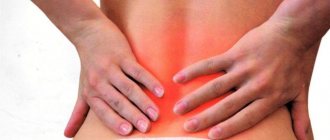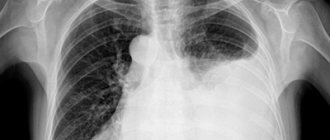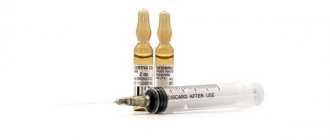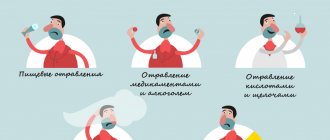Chlorine and chlorine-containing substances are quite often used both in industry and in the domestic sphere. Chlorine is used in the production of various solvents, pesticides, insecticides, medicines, detergents, bleaching and disinfectants. It is also widely used in non-ferrous metallurgy and plastics production. Considering that this substance has become quite firmly established in modern life, it is necessary to know the conditions for using chlorine-containing substances, how to help a person with chlorine poisoning, identify the first signs of such poisoning, and also know preventive measures to avoid unpleasant consequences.
What is chlorine and where is it used?
Chlorine, as a chemical element, belongs to the group of halogens and is present in all living organisms in the form of various compounds. The ions of this substance actively participate in the metabolic processes of the body as water-salt solutions, help reduce the increased activity of neurons, as well as improve the production of gastric juice and hydrochloric acid. For an adult, the daily intake of chlorine is approximately 0.8 grams of the substance, which is replenished by consuming table salt.
Content:
- What is chlorine and where is it used?
- How can you get poisoned by chlorine?
- Symptoms of chlorine poisoning
- First aid for chlorine poisoning
- Possible consequences and prevention of chlorine poisoning
- Finally
Chlorine itself is quite toxic; it is a yellowish-green gas with a metallic taste and a pungent odor. This chemical element is highly soluble in water, as well as in other organic liquids. It is widely used in household and industrial areas.
Chlorine is used to disinfect drinking and waste water, to produce pesticides used to kill rodents and insects, and to bleach fabrics in industrial and household conditions. It is used as one of the components of chemical warfare agents. Chlorine is important in metallurgical production and in the production of plastics. The medical industry actively uses chlorine to create medicines and food additives.
However, its high toxicity has led to the fact that this substance is prohibited for use in a number of European countries. When burned, chlorine forms a very dangerous substance - dioxin, which has immunosuppressive, teratogenic, carcinogenic and embryotoxic effects.
The maximum permissible standards of chlorine in domestic conditions are 0.1 milligrams per cubic meter of air (one-time), in industrial conditions the standards are higher and amount to 1 milligram per cubic meter.
Operative information
Emergency warnings, fire reports, monitoring
Overview of fires that occurred from December 27, 2022 to January 9, 2022.
During the specified period, 22 fires occurred, of which 9 were garbage fires
10-01-2022
Emergency Alert for January 10, 2022
On the possible occurrence of emergency situations in the Magadan region on January 10, 2022
9-01-2022
Emergency Alert for January 9, 2022
On the possible occurrence of emergency situations in the Magadan region on January 9, 2022
8-01-2022
How can you get poisoned by chlorine?
Most often, poisoning with chlorine and chlorine-containing substances is possible in the following situations:
- when inhaling gaseous substances;
- when ingesting pesticides or liquids containing chlorine by accident or in an attempt to commit suicide;
- in case of violation of safety regulations when working with toxic substances at industrial enterprises or at home;
- when visiting a public swimming pool, where there is no proper control over the use and dosage of disinfectants;
- when an aqueous solution of chlorine in high concentrations comes into contact with the mucous membranes or skin, especially in children;
Poisoning and contact with toxic substances, in particular chlorine-containing compounds, are especially dangerous for young children. A much smaller dose of the toxin can cause intoxication in a child compared to an adult and lead to irreparable consequences.
PSC today
The staff size of the CENTER is 750 staff units. The CENTER has 6 branches in the Magadan region in the following districts: Olsky, Khasynsky, Tenkinsky, Omsukchansky, Srednekansky and Severo-Evensky. Over the past three years, six fire service units of the Magadan Region have been opened in the Magadan Region: in the Olsky district - in the village of Talon, the village of Balaganny, the village of Takhtoyamsk, the village of Tauisk; in the Omsukchan district - in the village of Dukat; in the North Evensky district - in the village of Gizhiga. Currently, the CENTER includes 2 detachments of the State Fire Service, 14 fire departments, including the fire department of the technical service, and a search and rescue squad.
- Technology Center
- Communication and notification
- PSC today
Symptoms of chlorine poisoning
Manifestations of intoxication depend on the route of entry of poison into the body: through the respiratory system (inhalation); through the digestive tract (when taken orally); through the skin; as well as the amount and time of exposure to a person.
There are three degrees of severity of poisoning with chlorine and chlorine-containing substances: mild, moderate and severe. At very high concentrations of poison, poisoning occurs instantly.
Manifestations of mild chlorine poisoning are characterized by:
- moderate headache, dizziness.
Symptoms when poison enters through the upper respiratory tract:
- sore throat and nasopharynx;
- excessive lacrimation and rhinorrhea;
- redness of the eyes and mucous membranes of the mouth;
- burning and pain in the eyes;
- dry cough, frequent sneezing.
Symptoms when poison enters the gastrointestinal tract:
- pain, cramping in the abdomen;
- nausea, vomiting;
- loose stool.
If poison gets on the skin and mucous membranes:
- rash, itching and burning;
- contact dermatitis.
In moderate and severe forms of poisoning with chlorine and chlorine-containing substances, the symptoms of intoxication are more intense:
- hoarseness of voice, feeling of lack of air;
- unproductive shallow breathing, shortness of breath, up to suffocation, respiratory arrest;
- dry painful cough, turning into a wet cough with pink foamy discharge;
- acute pain in the chest area, significantly aggravated by coughing;
- nausea and repeated vomiting;
- decreased blood pressure and decreased heart rate;
- convulsive syndrome;
Chlorine poisoning may initially resemble a state of intoxication, then drowsiness, turning into impaired consciousness, even coma, depending on the amount of poison entering the body. This condition can last approximately three to four days, and at best ends with recovery from a coma with possible serious complications, damage to the liver, kidneys, and lungs.
In a fulminant course, all symptoms manifest themselves in an extremely severe form in the shortest period of time: suddenly developing suffocation with pulmonary edema, possible convulsive syndrome, cardiac arrhythmia, leading to cessation of breathing and cardiac activity.
Why is chlorine in the water dangerous when you shower?
Many of you may now argue that if you do not use tap water for drinking, you can avoid the risk of chlorine entering your body. However, it is not. Chlorinated water during hygiene procedures can also be harmful. Due to the effects of chlorine contained in water, human skin loses its natural fatty membrane. This leads to dryness and premature aging of the epidermis, and can also provoke itching or allergic reactions. Hair exposed to chlorine dissolved in water becomes dry and brittle. Medical studies have shown that an hour-long bath in water containing excess chlorine is equivalent to drinking 10 liters of chlorinated water.
Read material on the topic: How to check water quality: 9 interesting ways and more
First aid for chlorine poisoning
First of all, immediately call emergency services and rescuers. The victim must be urgently removed from the affected area, observing safety measures for the rescuer himself, namely: protection of the respiratory system, skin, and mucous membranes from poison entering the body (cotton and gauze bandages, respirators, goggles, gloves, protective clothing). In case of direct contact with a chlorine-containing substance, immediately stop its entry into the body by rinsing the skin with running water.
How you can help a person with chlorine poisoning:
- Unbutton your clothes, open the window, let in fresh air and ventilate the room.
- Rinse your mouth and nasal passages, and thoroughly rinse your eyes with plenty of running water or a two percent solution of baking soda.
- Provide the victim with alkaline drinks, milk, and mineral water.
- You can use soda inhalations.
- Provide the patient with emotional and physical peace.
- If liquids containing chlorine that do not have a corrosive effect are swallowed, with the victim clearly conscious, offer to drink large quantities of water and induce vomiting.
After providing first aid, the patient must be taken to a medical facility for further observation and treatment. The first day the patient should be under the supervision of qualified personnel, this will help to avoid many unpleasant serious consequences and prevent the occurrence of possible serious complications.
When treated in a hospital, therapy is aimed at restoring and maintaining the vital functions of the victim’s body:
- oxygen support if necessary;
- stabilization of breathing and blood circulation;
- normalization of metabolic processes;
- prevention of possible complications from the kidneys, brain, gastrointestinal tract;
- symptomatic therapy.
Urgent actions
First aid for acid poisoning has several specific features:
- Gastric lavage with water with burnt magnesia dissolved in it;
- If it is impossible to carry out manipulations with gastric lavage, the patient is allowed to drink large quantities of liquid that envelops the walls of the stomach (milk, vegetable oil, rice broth);
- A heating pad with ice is placed on the abdominal area to reduce pain;
- In case of hydrocyanic acid poisoning, an antidote must be administered immediately.
Note!
If there is the slightest suspicion of a perforation of the stomach, it is prohibited to rinse it.
In case of chemical poisoning with alkalis, first aid is carried out according to the same principle.
It should be noted that the consequences of the effects of ahs on the human body are extremely negative.
Despite the fact that first aid and treatment will be correct and timely, the victim may still have the following consequences of poisoning:
- As a result of severe burns to the vocal cords, a person loses the ability to speak;
- When the esophagus is burned, scars remain on the organ, which causes pain with any meal;
- Exposure to alkalis and acids on the eyes leads to complete blindness.
Note!
All household chemicals contain compounds of alkalis and acids. Therefore, first aid for poisoning with household chemicals is provided according to the principle described above.
Possible consequences and prevention of chlorine poisoning
With mild forms of chlorine intoxication, complications are usually absent. Recovery occurs a few days after the toxin enters the body.
After suffering moderate and severe forms of intoxication, the development of acute and chronic conditions is possible:
- respiratory tract diseases: pharyngitis, laryngitis, bronchitis, tracheitis, tracheobronchitis;
- toxic pneumonia and pulmonary edema;
- conjunctivitis;
- acute heart failure;
- bronchiectasis;
- paralysis of the vasomotor and respiratory centers;
- pneumosclerosis and emphysema.
To protect yourself from such consequences and from the possibility of chlorine poisoning, you must follow safety rules when working with hazardous substances at work, as well as at home:
- Work with chlorine-containing substances in well-ventilated areas with sufficient access to fresh air.
- Use personal protective equipment (rubber gloves, respirators, cotton gauze bandages) when working with substances containing chlorine.
- Work with pesticides and insecticides only in safety glasses and a respirator.
- Visit swimming pools in trusted places.
- Store poisons and household chemicals out of the reach of children, with clear labeling.







